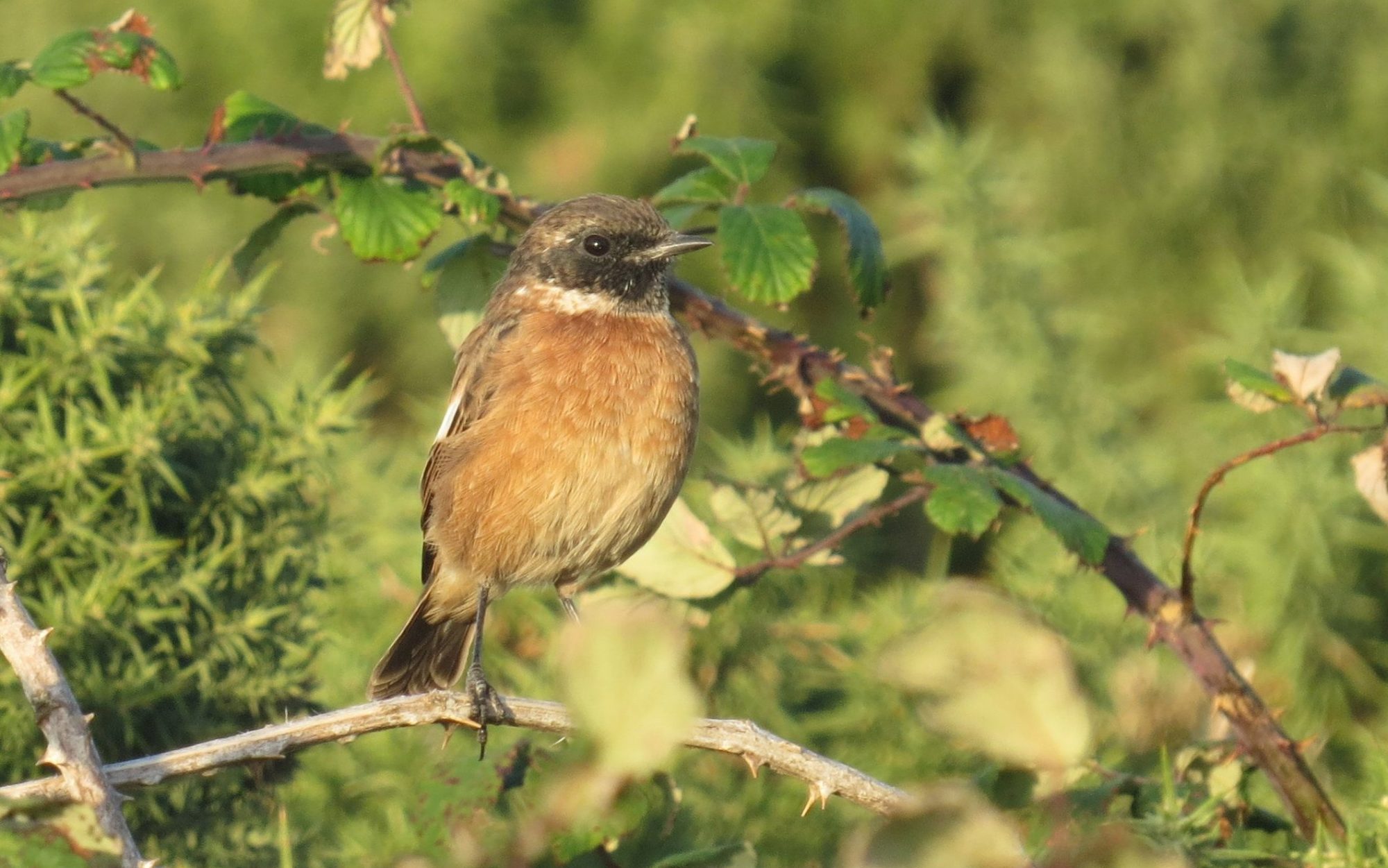AN INTRODUCTION TO THE WILDLIFE ON THE GOWER
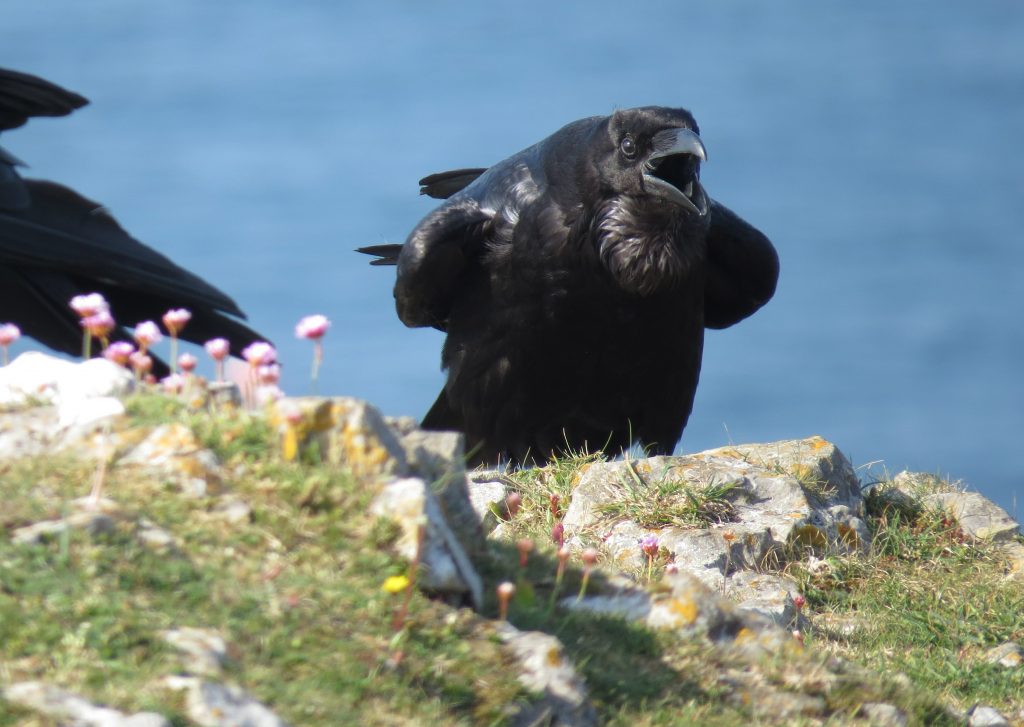
Gower holds a real true great variety of wildlife all year round with its diverse and often adjacent assortment of habitats. When you combine this with its spectacular coastlines, beautiful scenery, interesting historic elements and extensive network of footpaths this makes it a stunning place to find and watch wildlife.
There are regularly superb photographic opportunities with the wildlife as well as the guaranteed landscape scenery.
Coastal footpath and Cliffs
Gower is blessed with stunning cliffs particularly along its southern shore. This saltwater sprayed fringe combines rare flora as well as some very entertaining birds on the cliffs. The coastal cliffs hold a lovely set of birds on the South Gower coast of which many are resident. These cliffs also give a good vantage to overlook the sea and the wildlife in the area.
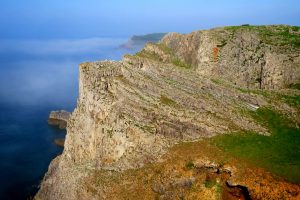
Gower is lucky to still hold good populations of many birds although even here they are in decline from modern world pressures.
It is still possible to hear Skylarks ,and Yellowhammers in these areas. Other rarer species include the Chough which returned to the area in 1989. Peregrine Falcon and Kestrels are regularly encountered.
Ravern, Rock Pipits and Dartford Warblers are also present but the latter have recently dwindled in numbers after recent hard winter weather.
In Spring and Summer the area holds a host of butterflies with 12 species possible in a day at the right time of year from the Small Blue, Gatekeeper, Dark Green Frittilary to the Grayling.
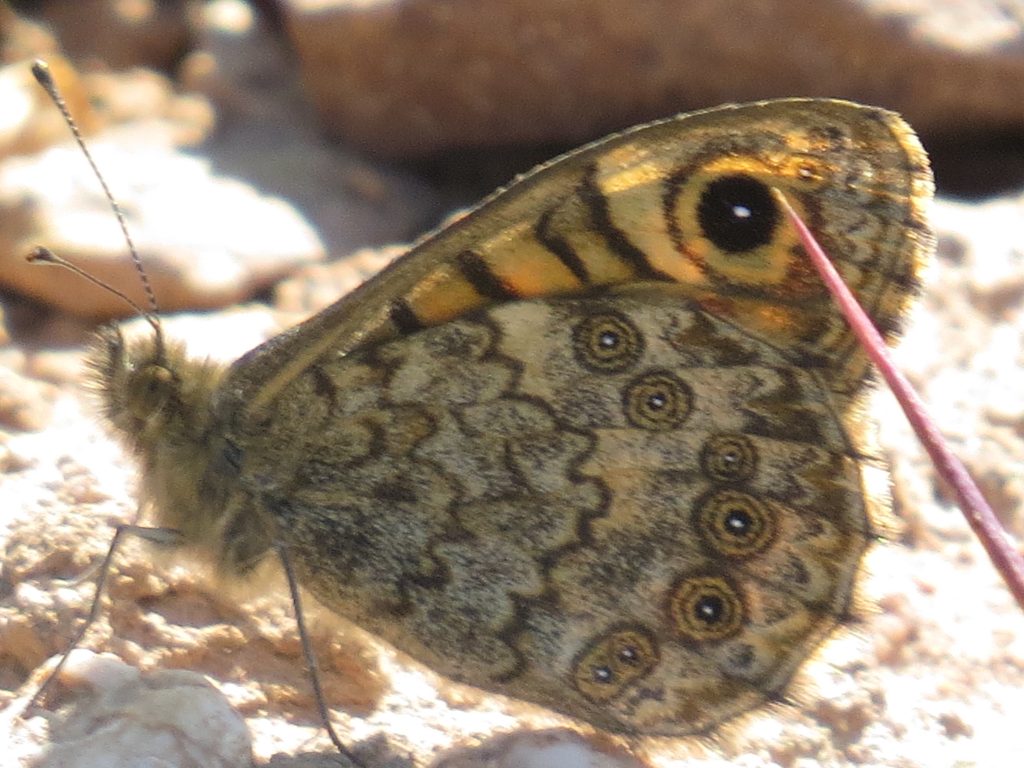
Wall Brown at Rhossili 2018
Out on the sheer Cliffs of Worms head are the seabirds such as Fulmar, Kittiwakes, Guillemots and Razorbill which can be seen only in spring and summer months and is the only site in Gower where these species breed together.
On calm occasions Puffins can also be seen during June and July as they come for a nose at the other breeding Auks on the head. The closest breeding nest sites are on the islands of Lundy and Skomer. Feeding flocks of Gannet and Manx Shearwaters can also be seen here sometimes in large numbers.

Here the swell of the storm Orphea when it hit the Outer Worm in Oct 2017
Other species which can be seen along the coastal path or out on Worms head include Rock Pipit, Stonechat, Meadow Pipit, Skylark, Fulmar, Kittiwake, Cormorant, Shag, Oystercatcher, Turnstone, Purple Sandpiper (winter), Whimbrel 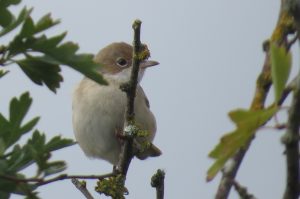 (spring).
(spring).
Whitethroat at Pennard Sept 2018
In winter, Great Northern and Red Throated Divers, Guilimots, Razorbills, and Common Scoter can be seen. In some years Long Tailed Ducks are around with a wintering group of up to 12 in 2017 and also in winter Arctic Gulls are regularly seen such as Glaucous and Iceland gulls. In 2015 Burry Holm held a Vagrant American Thayers Gull which was the first ever for Wales.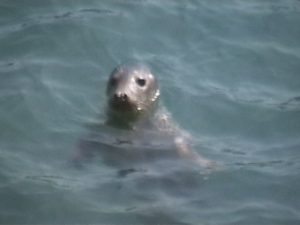
All year round Grey Atlantic Seals are in the area as are Harbour Porpoises. In the summer Common Dolphins can be found although far trickier to find.
Iceland Gull at Blackpill in March 2018
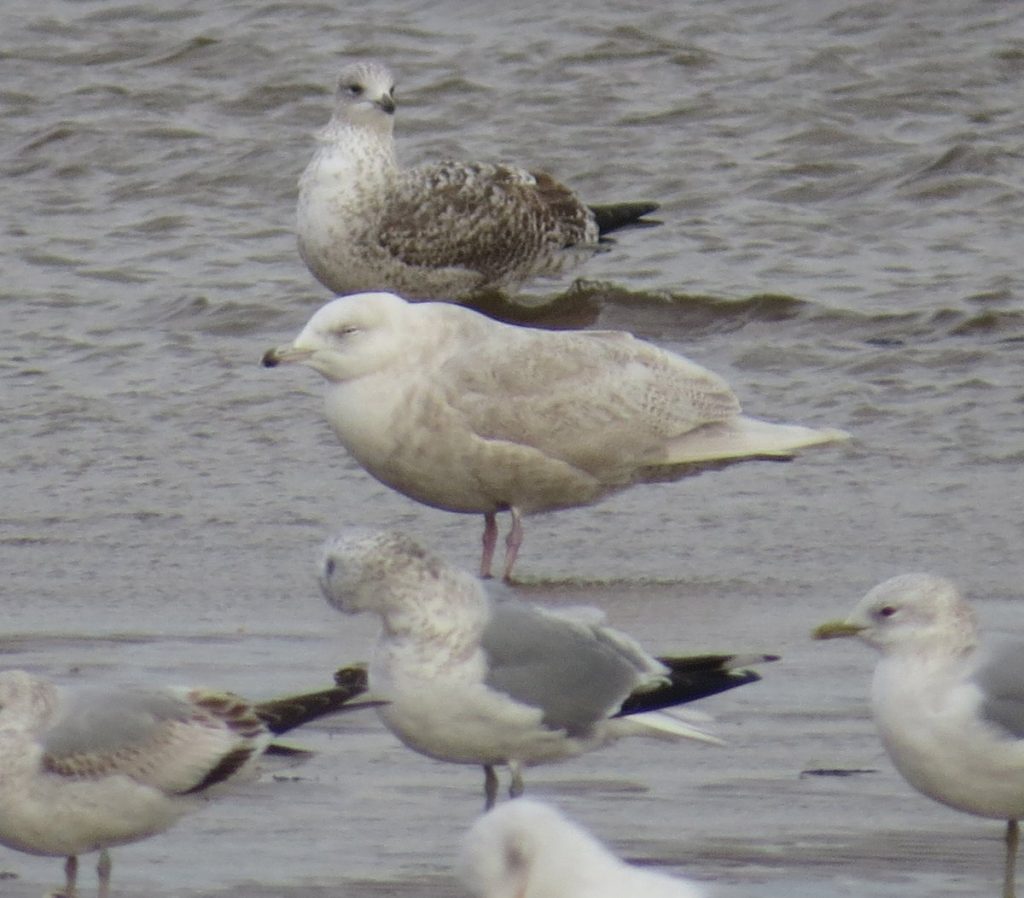
 Fox, Adder, Slow Worm, Weasel and Stoat are also sometimes encountered.
Fox, Adder, Slow Worm, Weasel and Stoat are also sometimes encountered.
A special local resident is the Chough – this delightful crow returned to breed on Gower in 1989 after a 100 year absence and it has now recolonised much of the cliff coastline although it can be quite elusive and erratic in its appearances.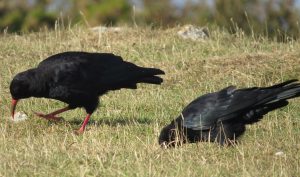 With its characteristic red bill and legs it is always a joy to watch.
With its characteristic red bill and legs it is always a joy to watch.
Peregrine Falcon
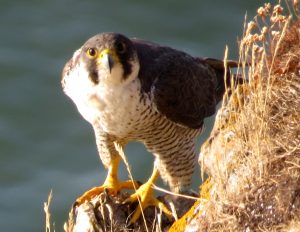 These can be quite a daily encounter – if seen hunting the Salt-marshes, Commons or the cliffs – they sometimes give spectacular views hunting or perched up. Here the Peregrine is watching a Chough on the cliff below me – which eventually escaped the Peregrines gaze.
These can be quite a daily encounter – if seen hunting the Salt-marshes, Commons or the cliffs – they sometimes give spectacular views hunting or perched up. Here the Peregrine is watching a Chough on the cliff below me – which eventually escaped the Peregrines gaze.
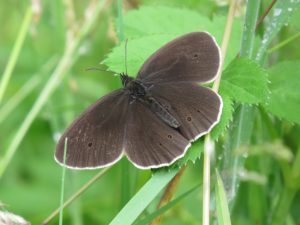
Ringlet
Estuaries and Tidal Salt-marsh.
The Burry inlet has a incredible tidal reach which is among some of the highest tidal differences in the world
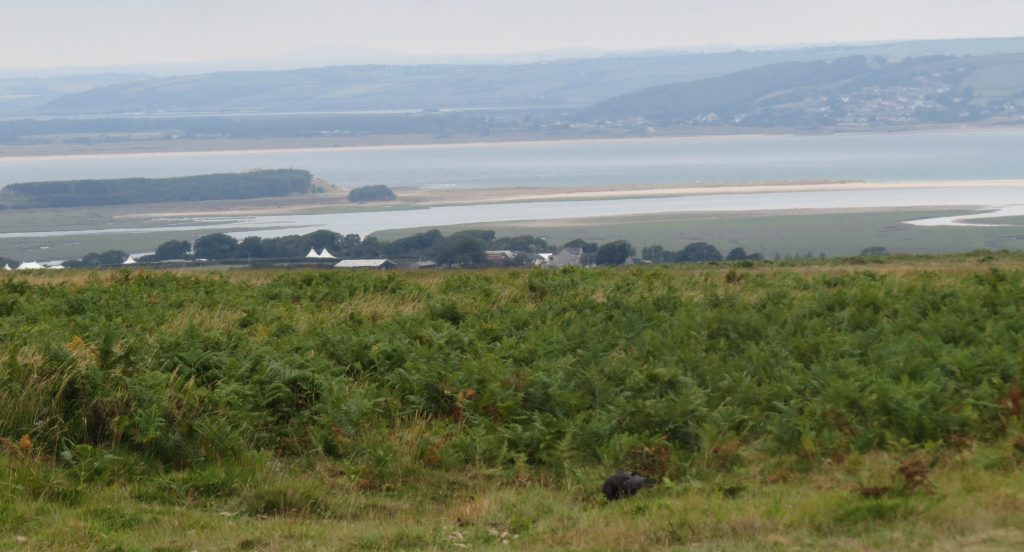 Here a view from Cefn Bryn towards Whitford point and Berges island.
Here a view from Cefn Bryn towards Whitford point and Berges island.
These areas hold some real excellent numbers of Ducks, Geese and Waders both wintering and migrating through the area. With good local knowledge and timing as well as a bit of luck some very interesting birds can be seen. A tidal estuary is a hive of activity and a joy to watch and the Burry holds huge numbers of wintering bird species with large flocks of Golden Plover particularly notable.
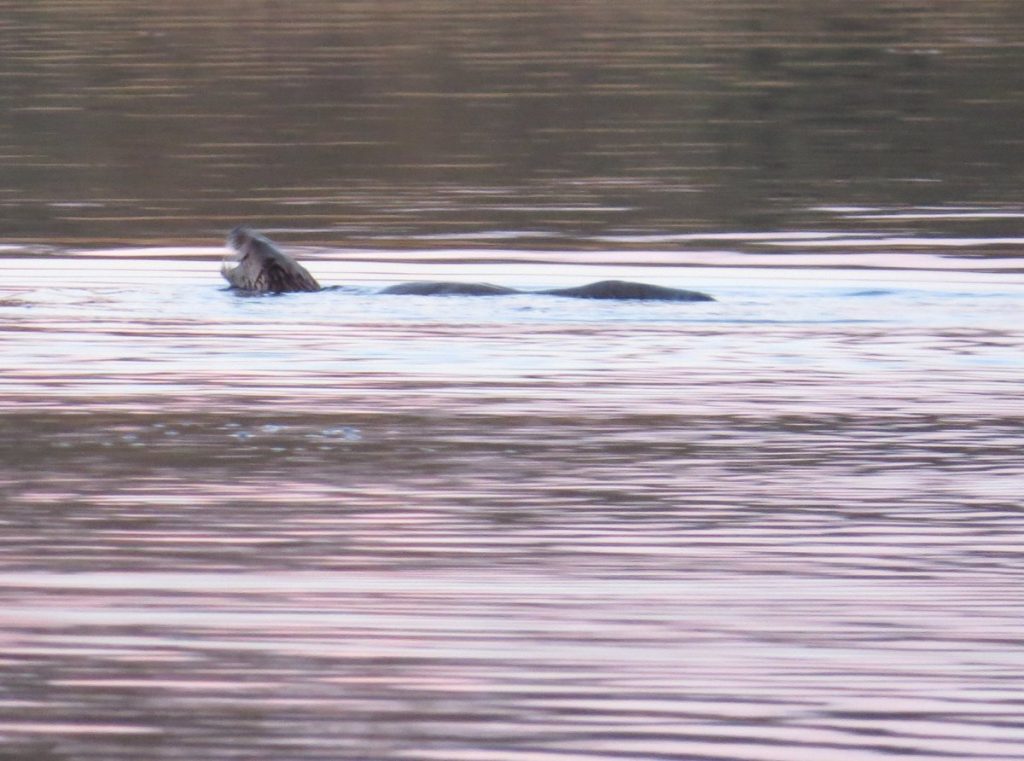
Otter- Cefn Bryn March 2018
Otters too are present on the estuary and its salt marshes but are very elusive and are more often encountered on smaller pools.
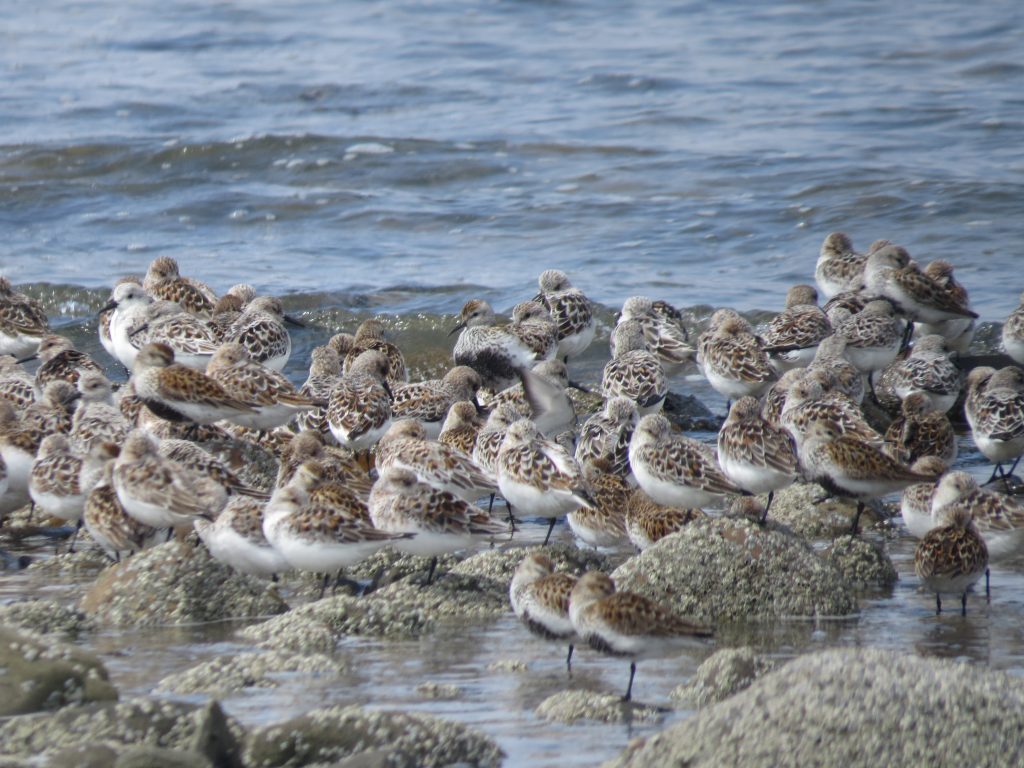 A group of spring plum aged Sanderling and Dunlin roosting at Whitford Point at high tide
A group of spring plum aged Sanderling and Dunlin roosting at Whitford Point at high tide
Some of the wader species which can be seen on North Gower include:
Curlew, Whimbrel, Dunlin. Redshank , Greenshank,Sanderling, Black tailed Godwit, Bar Tailed Godwit, Grey Plover, Golden Plover, Ringed plover, Purple Sandpiper, Oystercatcher, Knot , Common Sandpiper, Green Sandpiper, Snipe, Jack Snipe ( winter), Purple Sandpiper(winter) as well as the odd Little Stint and Curlew Sandpiper in spring but mainly autumn.
These waters can also hold some interesting species including :
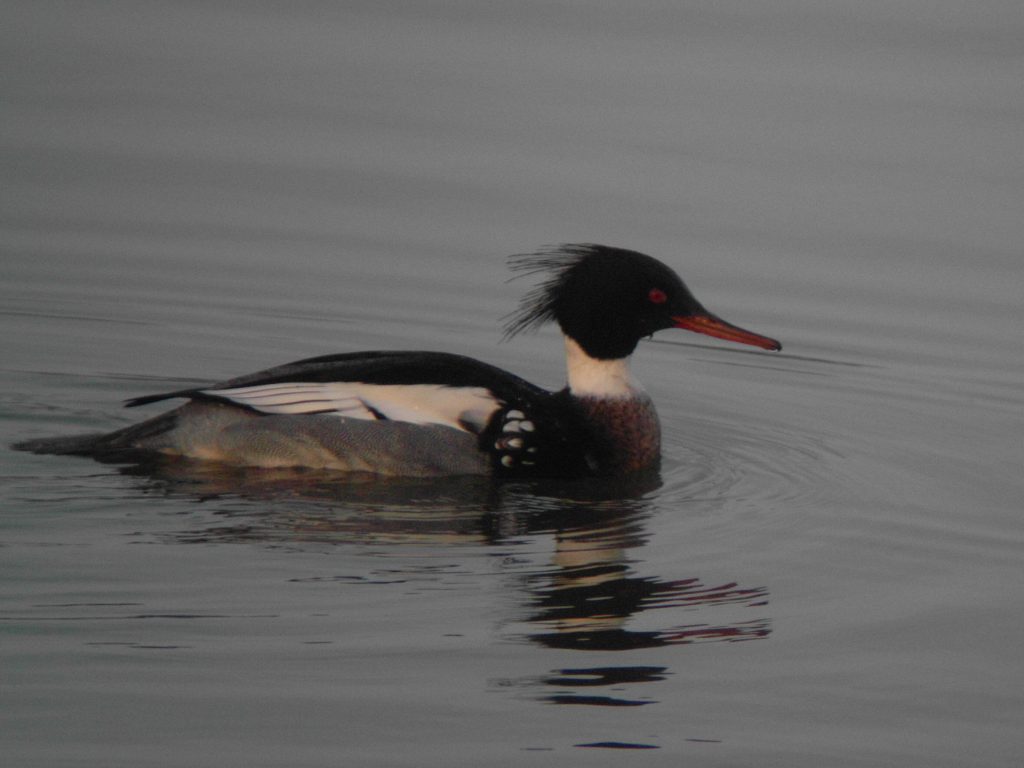
A spectacular Male Red Breasted Merganser a wintering species on th estuary in small numbers.
Eider, Wigeon, Pintail, Teal, Dark Bellied Brent Goose, Slavonian Grebe, 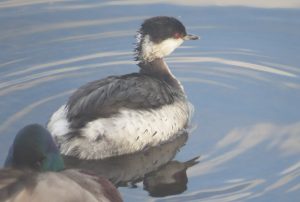 Gullimot, Red Throated Diver, Great Northern Diver, Red Breasted Merganser, Goldeneye, Scaup, Sandwich, Conman and Arctic Tern, Arctic Skua, Gannet, Manx Shearwater, Grey Heron, Great White and Little Egrets.
Gullimot, Red Throated Diver, Great Northern Diver, Red Breasted Merganser, Goldeneye, Scaup, Sandwich, Conman and Arctic Tern, Arctic Skua, Gannet, Manx Shearwater, Grey Heron, Great White and Little Egrets.
Slavonian Grebe – small numbers winter annually in the Burry Islet.

Birds of Prey
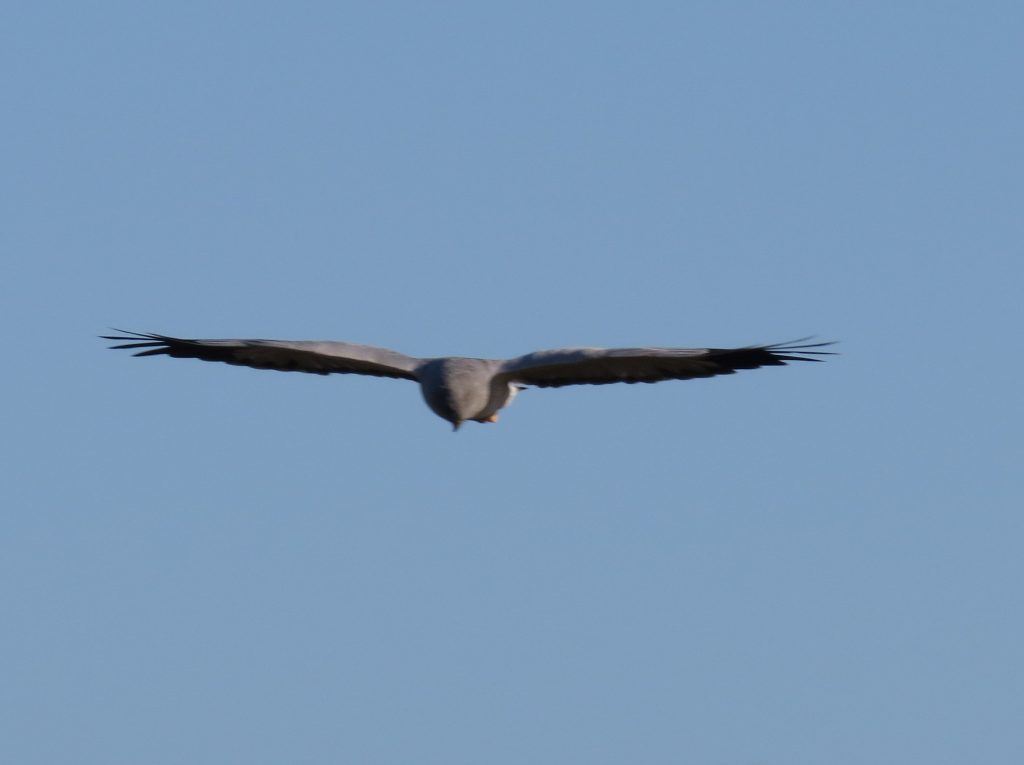
Male Hen Harrier over the Vile, Rhossili Feb2017
Hen Harriers are present on Gower from autumn until spring with usually a winter roost, although in the day they can also be found quartering fields, salt marsh or on common land.
Other predators at this time can be over an wintering marsh Harrier or Short eared Owl in a good vole year with the more usual Red Kite, Merlin, Sparrow hawk, Goshawk, Peregrine, Barn Owl or Kestrel lurking around somewhere. Peregrines and Merlin’s are often seen hunting the abundant which the area holds.
In the summer the elusive Hobby is occasionally encountered as it hunts the plentiful Dragonflies over the marsh or Commons.
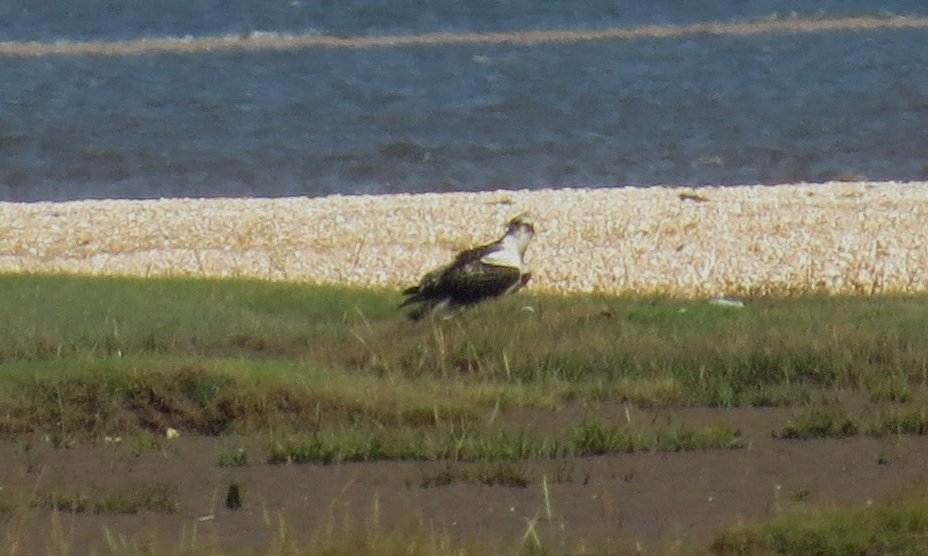
Osprey out on the saltmarsh off Weobley in autumn.
In autumn the Burry Islet hosts Ospreys! These majestic birds are stopping off to refuel from their more northern nest sites before migrating south to Africa. Up to 4 have been present at once in some years and it’s a real impressive sight to see them fishing the estuary.

Red Kites are now encountered regularly on The Gower a real success story this bird was over Rhossili in July 2018
The Commons
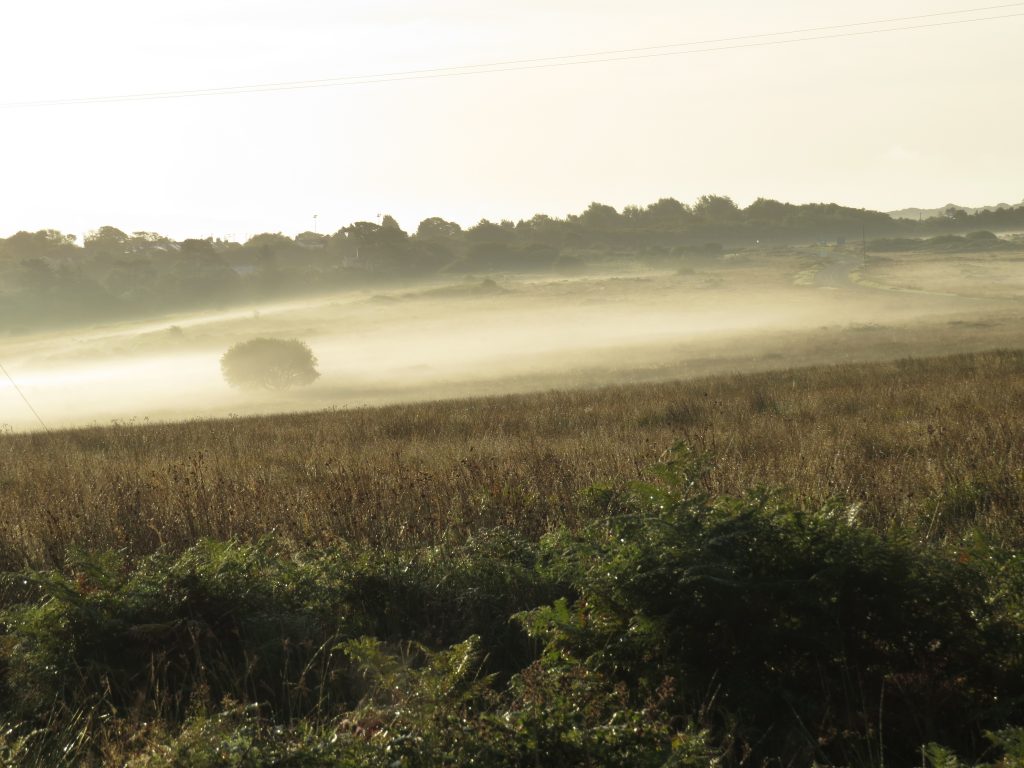
View over Fairwood common.
The common land area of Gower is a very idyllic scenic area. It is still grazed by wild horses along with cattle and sheep. This helps keep the bracken at bay and a real wealth in butterflies, flowers and plants including the whitlow Grass known only from Gower in the UK although this occurs in a more is coastal location.
The habitat is great for declining species such as yellowhammer and Skylarks both threatened due to changes in agriculture practices of modern farming. The Cuckoo also just clings on with one or two on the commons.
Stone-chats and Linnets are still relatively common as are a few Green Woodpeckers, the Stock Dove too still survives on the Gower.
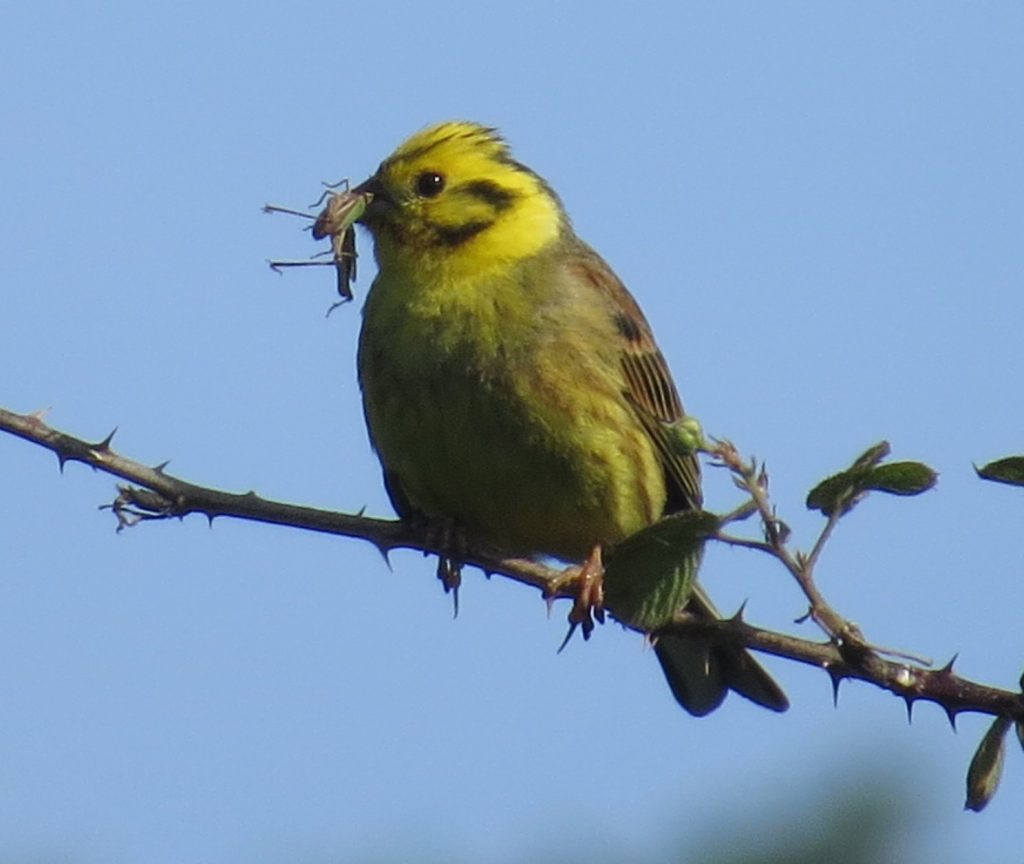
A male Yellowhammer with food for its brood.
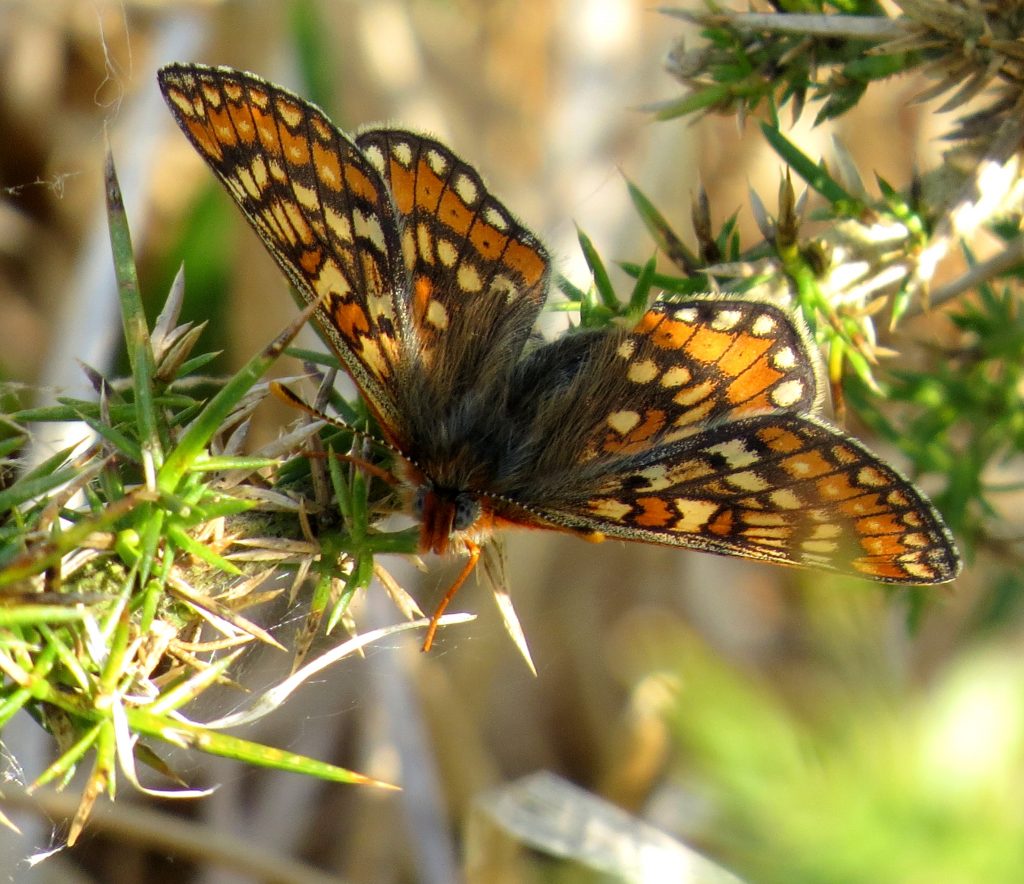
The commons are rich in a wealth of butterflies including the rare and beautiful Marsh Fritillary and wells as Small and Common Blues, Wall Brown, Dark Green Fritillary, Silver washed Fritillary, Small Copper and Gatekeeper to name a few to be found on Gower.
Dragonflies and Damselflies are also well represented from the Great Emperor shown below to the far rarer Southern Damselfly.
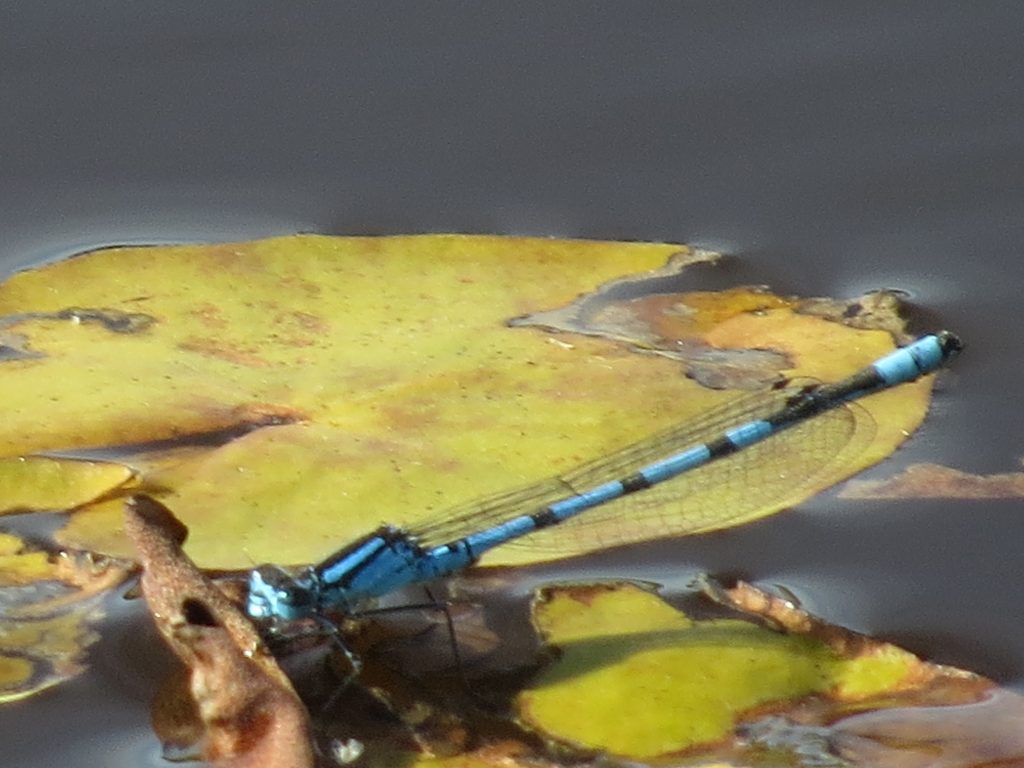
So I hope you enjoyed a brief summary of some of the incredible wildlife which can be seen on Gower.
Migrant Birds to Gower
 A male Ring Ousel.
A male Ring Ousel.
Gower is fortunate to get many migrant species particularly in the Spring and autumn. These vary depending upon the season with lots of seabirds, waders as well as Warblers and flycatchers passing through in good numbers.
In the gallery there are images of some of the scarce or rarer recent birds on Gower. these can include
